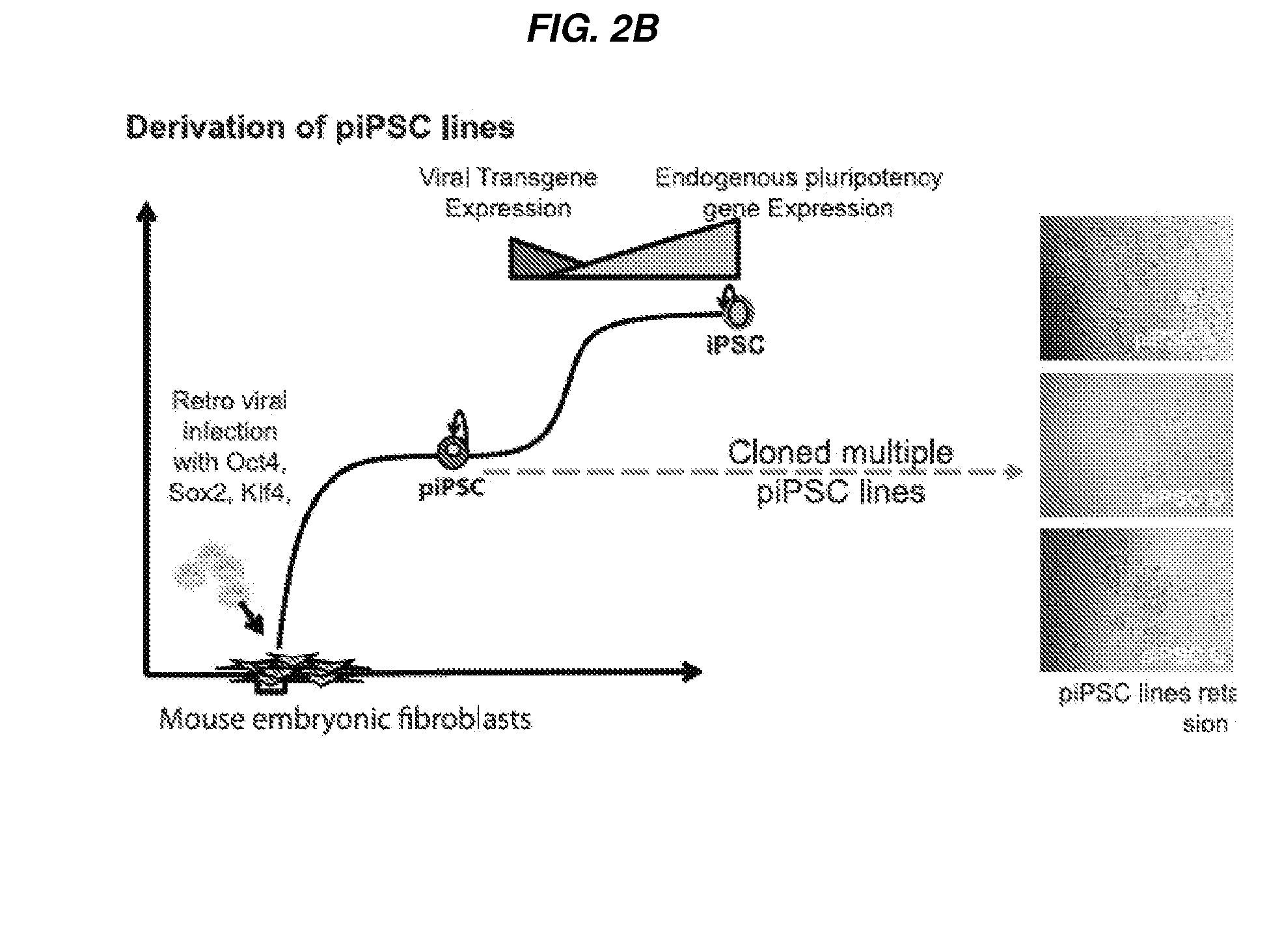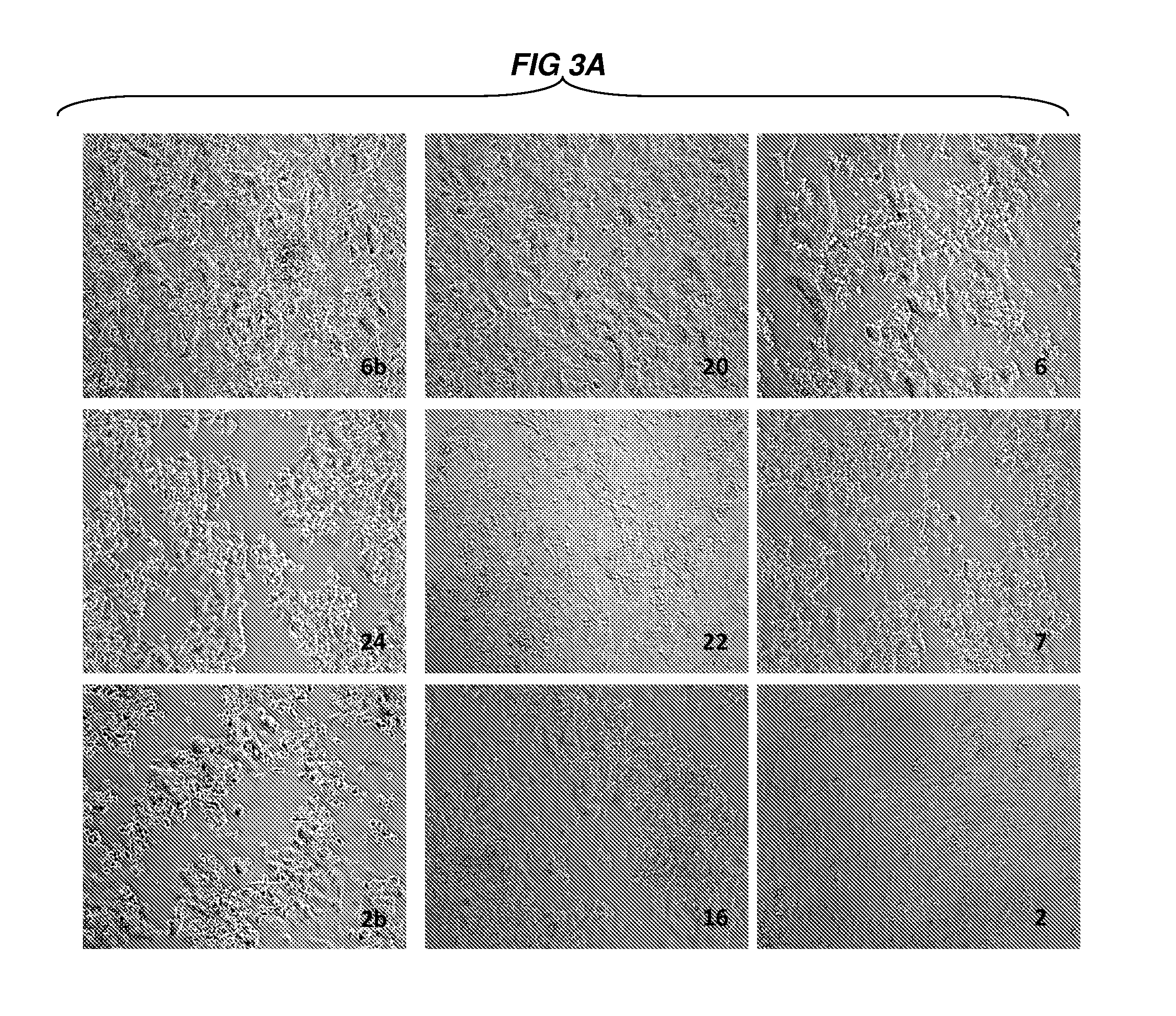Stable reprogrammed cells
a reprogramming and cell technology, applied in the field of stable reprogramming cells, can solve the problems of partially reprogrammed cells being discarded, their stability, pluripotency, molecular and epigenetic characteristics have yet to be fully described, and the process of reprogramming remains inefficien
- Summary
- Abstract
- Description
- Claims
- Application Information
AI Technical Summary
Benefits of technology
Problems solved by technology
Method used
Image
Examples
example 1
[0466]The majority of transduced cells fail to successfully navigate the sequential steps for attaining pluripotency and as a result become trapped in intermediate states (Mikkelson et al., 2008). The known partially reprogrammed states are characterized by unique epigenetic and molecular signatures such as DNA hypermethylation of critical pluriptency genes, low-level reactivation of endogenous stemness genes, and incomplete silencing of lineage-specifying transcription (Mikkelson et al., 2008; Sridharan et al., 2009). However, multiple yet to be described partially reprogrammed states may exist. Indeed, since the first description of partially reprogrammed cells that reprogrammed upon inhibition of DNA methylransferase with 5′-Aza cytodine (5′ AzaC), two additional populations that reprogram upon treatment with small molecule inhibitors of distinct signal transduction pathways, have been described (Ichida et al., 2009; Silva et al, 2008).
[0467]The first report on the derivation of ...
example 2
[0475]Stable Reprogrammed Intermediate (piPS) Cell Lines Exhibit Distinct Molecular Signatures from iPSCs and MEFs.
[0476]Previous microarray-based expression profiling allegedly reports presence of possible intermediate reprogrammed lines (Mikkelsen et al, 2008, Sridharan et al, 2009). However, Mikkelsen et al., and Sridharan et al., were unable to specifically identify or isolate the intermediate reprogrammed cells, or detect activation of endogenous pluripotency programs. Since subtle distinctions in gene expression may delineate the differences between the stable intermediate piPSCs as disclosed herein and MEFs and iPSCs, the inventors employed real-time TaqMan RT-PCR to demonstrate the molecular profile to distinguish the stable intermediate piPSCs as disclosed herein from MEFs and iPSCs and to quantify the gene expression of a subset of ninety genes associated with pluripotency, stemness, and lineage specification in the stable intermediate piPSCs.
[0477]As shown in FIGS. 24, 26...
example 3
[0480]Stable Reprogrammed Intermediate (piPS) Cells Respond Differently to Reprogramming Chemicals.
[0481]To examine whether multiple piPSC lines could be further reprogrammed to a fully pluripotent state, piPSC were cultured in the presence of RepSox, a known inhibitor of Tgf-β signalling previously described to reprogram intermediate cells (Ichida et al., 2009), 2i-treatment, combined chemical inhibition of Mek / Erk and GSK3 signaling (Silva et at, 2008), or the DNA methyl-transferase inhibitor 5′AzaC. As shown in FIG. 28B, numerous stable intermediate cell lines (piPSC lines D, F, G, and E) underwent further reprogramming to fully reprogrammed iPS cells with treatment of 25 μM Repsox for 48 hours as determined by the expression of Nanog (FIGS. 28A and 28C).
[0482]Chemically Reprogrammable Stable Reprogrammed Intermediate (Pips) Cell Lines have Higher Levels of Activating Chromatin Associated with Nanog.
[0483]Since piPSC lines exhibit comparable pluripotency programs by RT-PCR, the i...
PUM
| Property | Measurement | Unit |
|---|---|---|
| doubling time | aaaaa | aaaaa |
| doubling time | aaaaa | aaaaa |
| doubling time | aaaaa | aaaaa |
Abstract
Description
Claims
Application Information
 Login to View More
Login to View More - R&D
- Intellectual Property
- Life Sciences
- Materials
- Tech Scout
- Unparalleled Data Quality
- Higher Quality Content
- 60% Fewer Hallucinations
Browse by: Latest US Patents, China's latest patents, Technical Efficacy Thesaurus, Application Domain, Technology Topic, Popular Technical Reports.
© 2025 PatSnap. All rights reserved.Legal|Privacy policy|Modern Slavery Act Transparency Statement|Sitemap|About US| Contact US: help@patsnap.com



